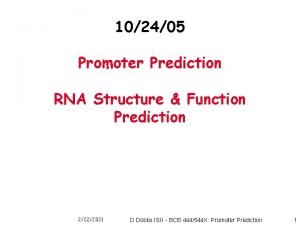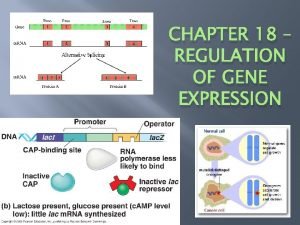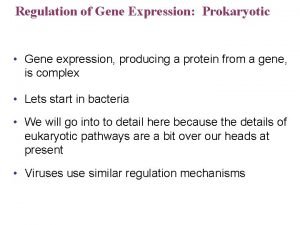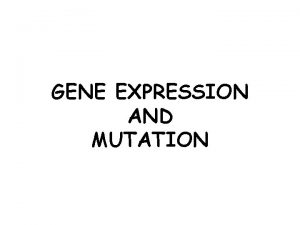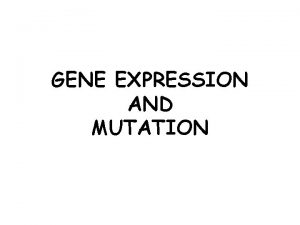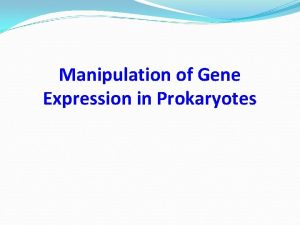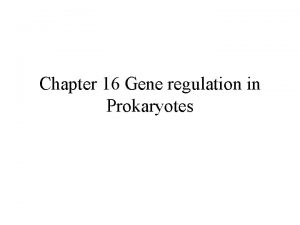Foreign Gene Expression and Protein Production in Prokaryotes









- Slides: 9

Foreign Gene Expression and Protein Production in Prokaryotes and Eukaryotes • Prokaryotic Expression Systems • Fusion Proteins • Biofilms • Secretion • Eukaryotic Expression Systems • Posttranslational modifications (PTMs)

Prokaryotic Expression Systems • E. coli, Bacillus subtilis, Staphylococcus carnosus, Streptomyces lividans • Prokaryotic promoter—ribosome binding site—MCS— transcription termination site • Prokaryotic selectable marker Fig. 6. 19

Potential Problems in Prokaryotic Expression Systems • • • Low expression Degradation by bacterial proteases Improper folding Oxygen limitations Biofilm formation

Fusion proteins • • • Used to avoid problems with digestion of foreign proteins by proteases Used to aid purification of foreign proteins, often by affinity chromatography Often a rare protease cut site is added to the fusion partner

Protein Secretion • • • Requires a bacterial signal peptide sequence In gram negative bacteria like E. coli, the protein is secreted to the periplasmic space, as opposed to the media in gram positive bacteria Secretion affords some degree of protection against bacterial proteases

Chapter 6 Manipulation of Gene Expression in Prokaryotes Figure 6. 32. Expressing a foreign protein generates a metabolic load on host bacteria. Molecular Biotechnology: Principles and Applications of Recombinant DNA, Fourth Edition Bernard R. Glick, Jack J. Pasternak, and Cheryl L. Patten Copyright © 2010 ASM Press American Society for Microbiology 1752 N St. NW, Washington, DC 20036 -2904

Eukaryotic Expression Systems • Yeast, Aspergillus niger, Baculovirus-Insect Cells, Mammalian Cells (e. g. Chinese Hamster Ovary cells) • Eukaryotic promoter-MCS-transcription termination site • Eukaryotic selectable marker Fig. 7. 4

Eukaryotic Expression Systems • Unlike prokaryotic expression systems, allow for posttranslational modification (PTM) of proteins (e. g. , glycosylation, phosphorylation, hydroxylation, disulfide bond formation, processing of propeptides)

Examples of some eukaryotic expression vector constructs Fig. 7. 10 Fig. 7. 24 K-Kozak sequence, S-signal peptide, T-protein affinity tag, P-protease site
 Chapter 17 from gene to protein
Chapter 17 from gene to protein Prokaryotes vs eukaryotes gene regulation
Prokaryotes vs eukaryotes gene regulation Gene prediction in prokaryotes and eukaryotes
Gene prediction in prokaryotes and eukaryotes Prokaryotes vs eukaryotes gene regulation
Prokaryotes vs eukaryotes gene regulation Jelaskan alir proses produksi multimedia
Jelaskan alir proses produksi multimedia Too foreign for home too foreign for here
Too foreign for home too foreign for here Gene by gene test results
Gene by gene test results Chapter 17 from gene to protein
Chapter 17 from gene to protein Chapter 17 from gene to protein
Chapter 17 from gene to protein Lac operon in prokaryotes
Lac operon in prokaryotes


